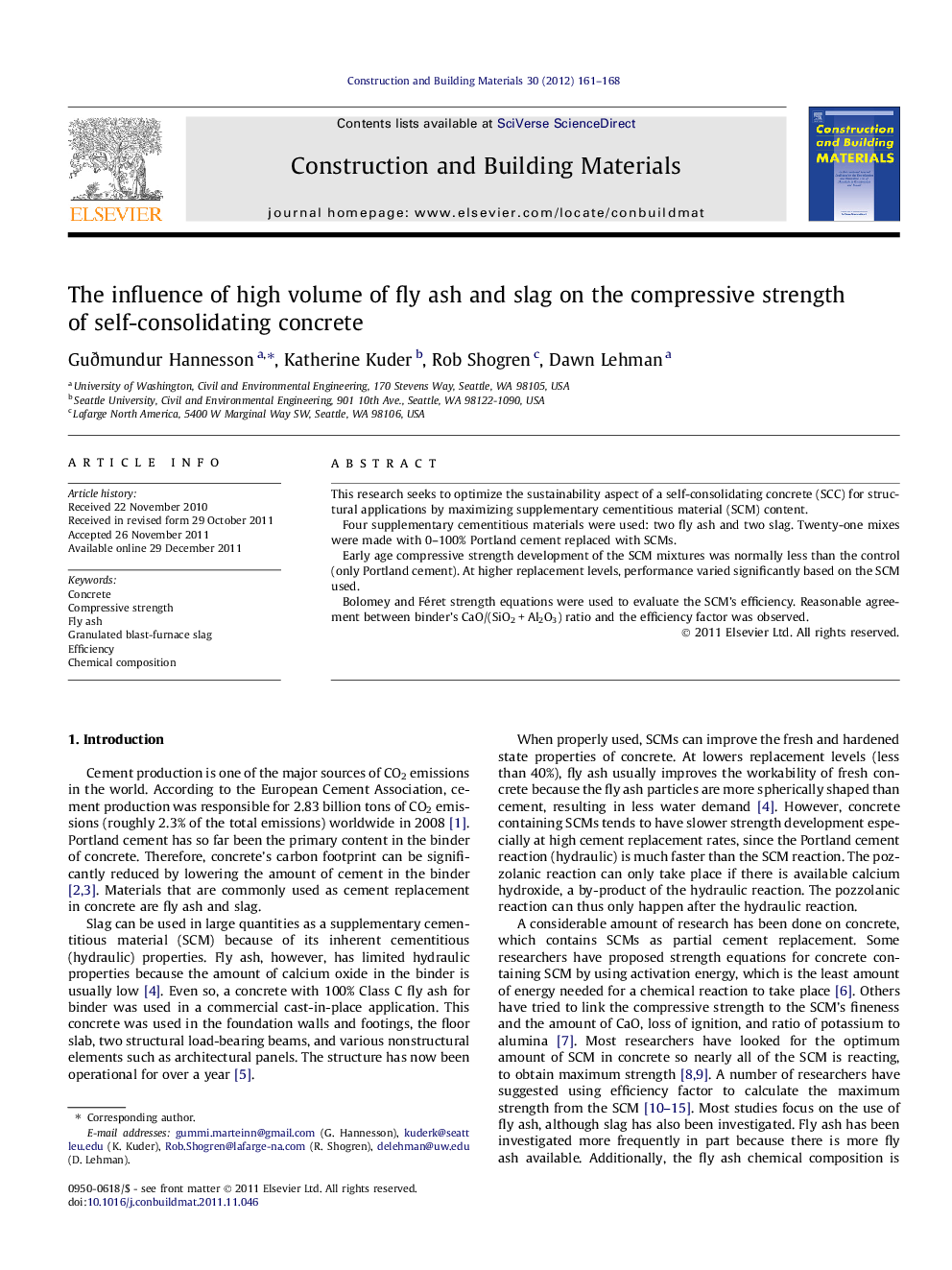| Article ID | Journal | Published Year | Pages | File Type |
|---|---|---|---|---|
| 258508 | Construction and Building Materials | 2012 | 8 Pages |
This research seeks to optimize the sustainability aspect of a self-consolidating concrete (SCC) for structural applications by maximizing supplementary cementitious material (SCM) content.Four supplementary cementitious materials were used: two fly ash and two slag. Twenty-one mixes were made with 0–100% Portland cement replaced with SCMs.Early age compressive strength development of the SCM mixtures was normally less than the control (only Portland cement). At higher replacement levels, performance varied significantly based on the SCM used.Bolomey and Féret strength equations were used to evaluate the SCM’s efficiency. Reasonable agreement between binder’s CaO/(SiO2 + Al2O3) ratio and the efficiency factor was observed.
Graphical abstractFigure optionsDownload full-size imageDownload as PowerPoint slideHighlights► Four different SCMs were used as cement replacement: two fly ash and two slag. ► High SCM replacement levels tested, including 80% and 100% Portland cement replacement. ► Setting time similar to conventional mix, except at high dosage of Class C fly ash. ► Strength development highly dependent on replacement level and type of SCM. ► Correlation between binder CaO/(SiO2 + Al2O3) ratio and SCM efficiency observed.
